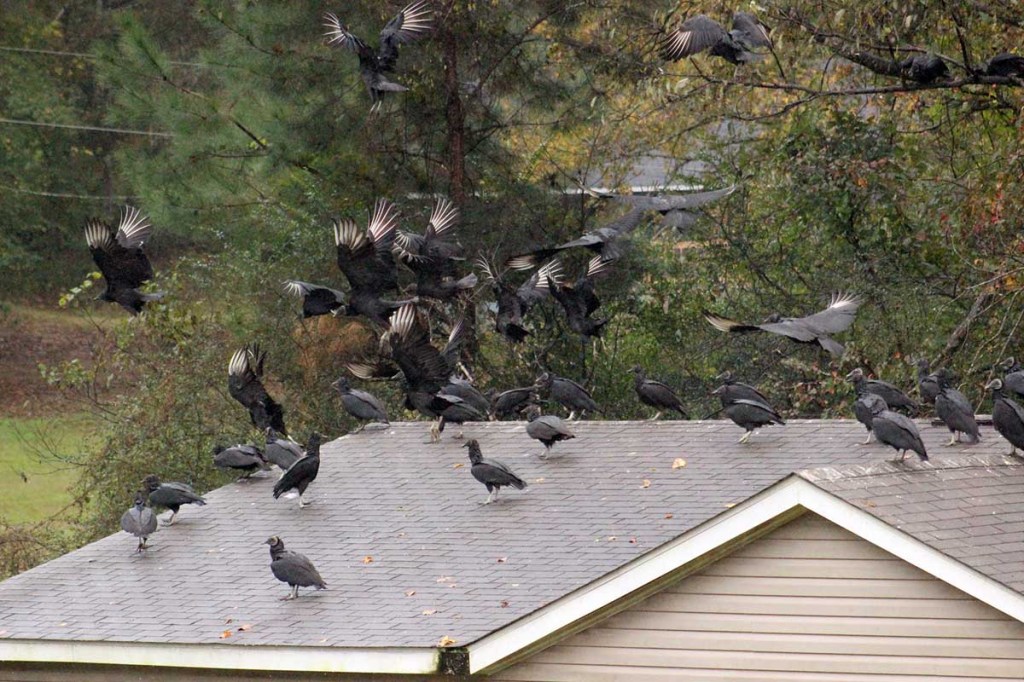Vultures wreaking havoc on Colony residents
Published 5:15 am Wednesday, November 24, 2021

- Vultures
COLONY — Waking up to see dozens of black vultures sitting on your car and home would be a scary sight for many people, but some residents of Colony are seeing exactly that due to a nesting flock in their neighborhood.
Town resident Tammy Malcom spoke to the Colony Town Council about the issue during the council’s meeting last week, and said the birds are causing damage to her and her neighbors’ homes and vehicles.
“Every morning, I get up at 6:30 and fight the vultures until I get ready to go to work,” she said.
She said the birds are picking at the rubber stripping on her and her neighbors vehicles and damaging their homes.
“It’s gotten so bad that I’ve had to have my sunroof replaced,” she said. “They’re taking the shingles off my house, my patio furniture is messed up.”
Unfortunately for Colony’s residents — and anyone else being pestered by the carrion-eating birds — vultures are protected by the federal Migratory Bird Treaty Act, which is administered by the US Fish and Wildlife Service. That means a federal permit is required to trap, kill, relocate or otherwise handle vultures or their eggs.
The National Wildlife Control Training Program’s guide to managing black vultures recommends the removal of vulture food, roost trees and nest sites, which should reduce the number of birds in the area. Removal of roost site trees and pruning of branches may also induce birds to abandon a traditional roost site.
The guide also recommends the installation of taut wire on rooftops about 8 inches above and parallel to the ridge line of the roof to discourage or prevent birds from perching, and maintaining high tension on the wire so vultures cannot push it down, straddle or perch beneath it.
To encourage vultures to nest in another location, the guide states that harassment with pyrotechnics and shell crackers can drive them away — but notes that the harassment must be diligent, persistent and initiated as soon as the problem is recognized.
Vultures can also be repelled by the distress calls of other birds including crows, starlings and blackbirds.
Yamina Nater-Otero, program coordinator at Audubon New York, said one piece of good news is that — aside from damages they may be causing to homes or vehicles — vultures do not pose a public health hazard, which was a concern that was raised at one of Colony’s town council meetings.
“They don’t spread disease, that’s a big misconception,” she told The Times.
Some bird experts have recommended using an effigy or hanging up an actual dead bird to scare vultures away from an area, but Nater-Otero said that isn’t a really good idea.
She said vultures are social so hanging a bird that looks like them may just attract more of them, plus hanging something dead also attracts birds that are scavengers.
“That’s not a really good method unfortunately,” she said.
Nater-Otero said the birds are likely congregating in one area to nest, as they do not build traditional nests like most birds, and like to find places like caves or abandoned buildings.
“It sounds like there’s no habitat for them to nest, that’s the actual problem,” she said.
For similar situations involving owls and eagles that are lingering in a certain area, people will create nests for them, and it seems like there are a few studies done where they have created structures for the vultures to nest in, so the answer may be to create structures where they can nest, Nater-Otero said.
“All birds want is habitat, a place to nest and roost,” she said.
Whatever hassles they may cause to people, vultures and other scavengers do serve a necessary purpose in the food chain, Nater-Otero said.
“Think about what would happen if we didn’t have scavengers who didn’t help break down big dead things.” she said. “These scavengers, like vultures, raccoons, eagles, they help break things down.”
Nater-Otero said vultures make it so we don’t have large carcasses just lying around; they break down the big things into smaller things that the rest of the environment takes care of.
“They’re a really necessary part of the food chain,” she said.


